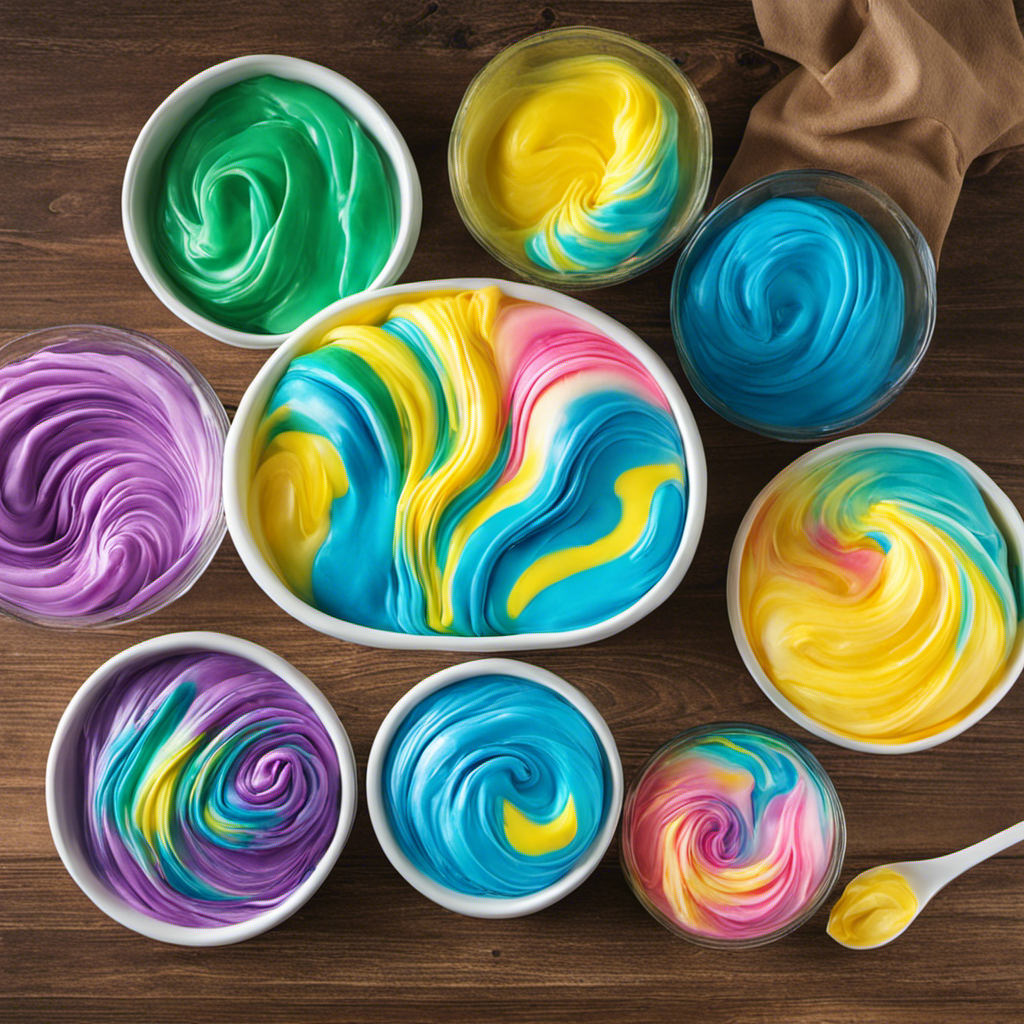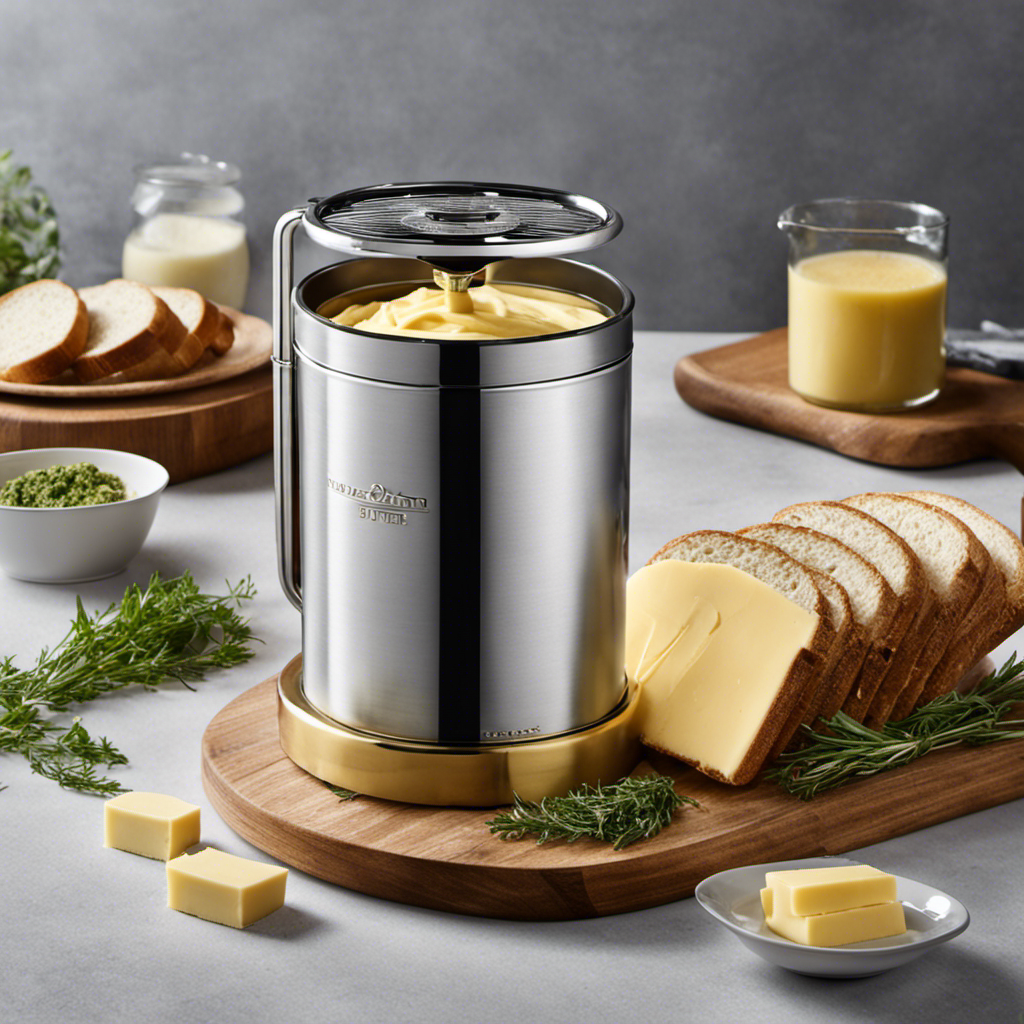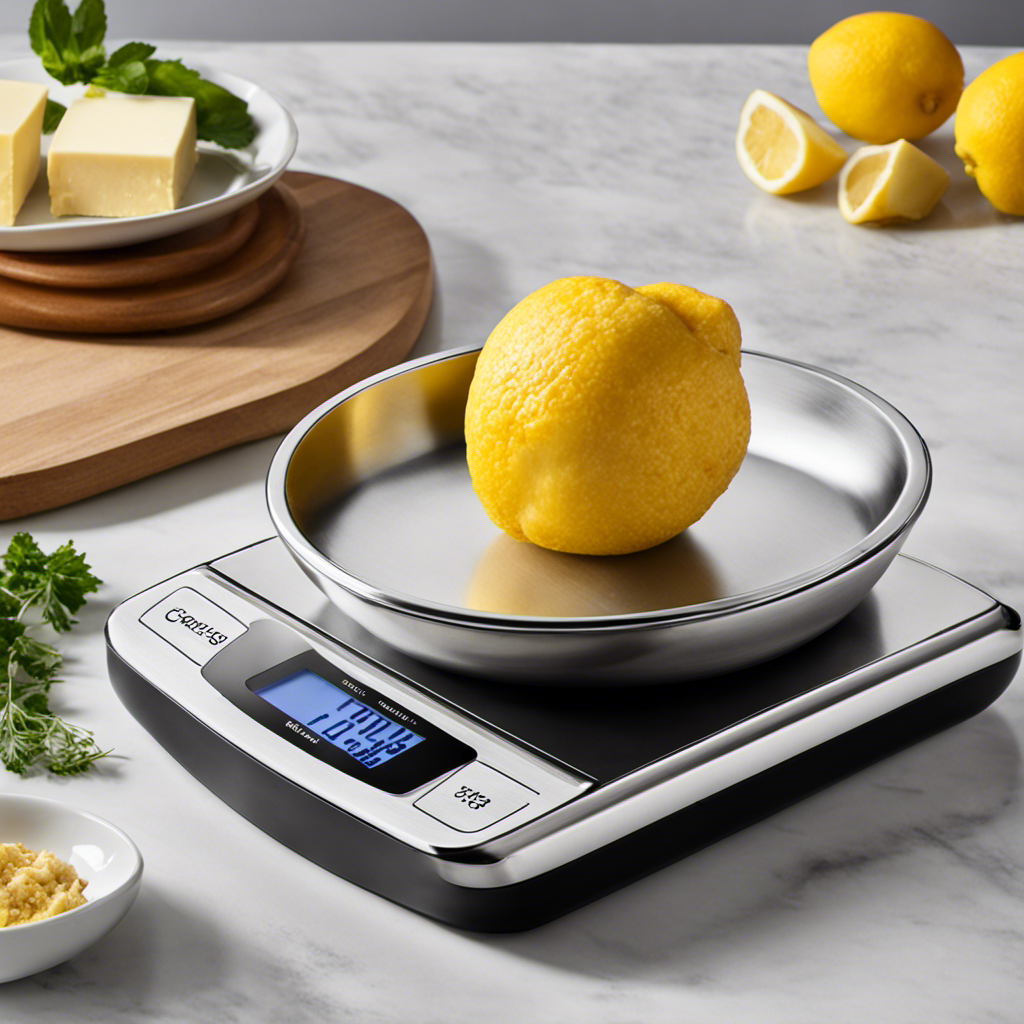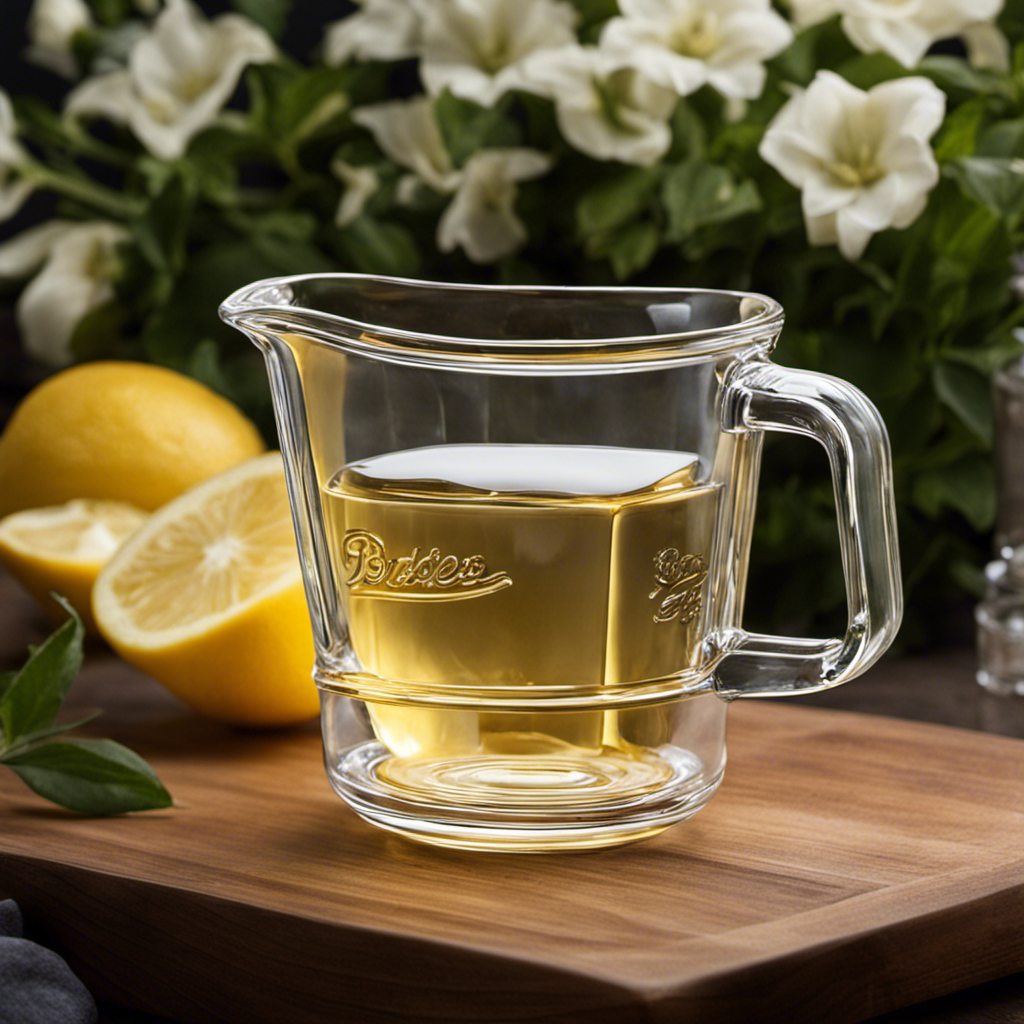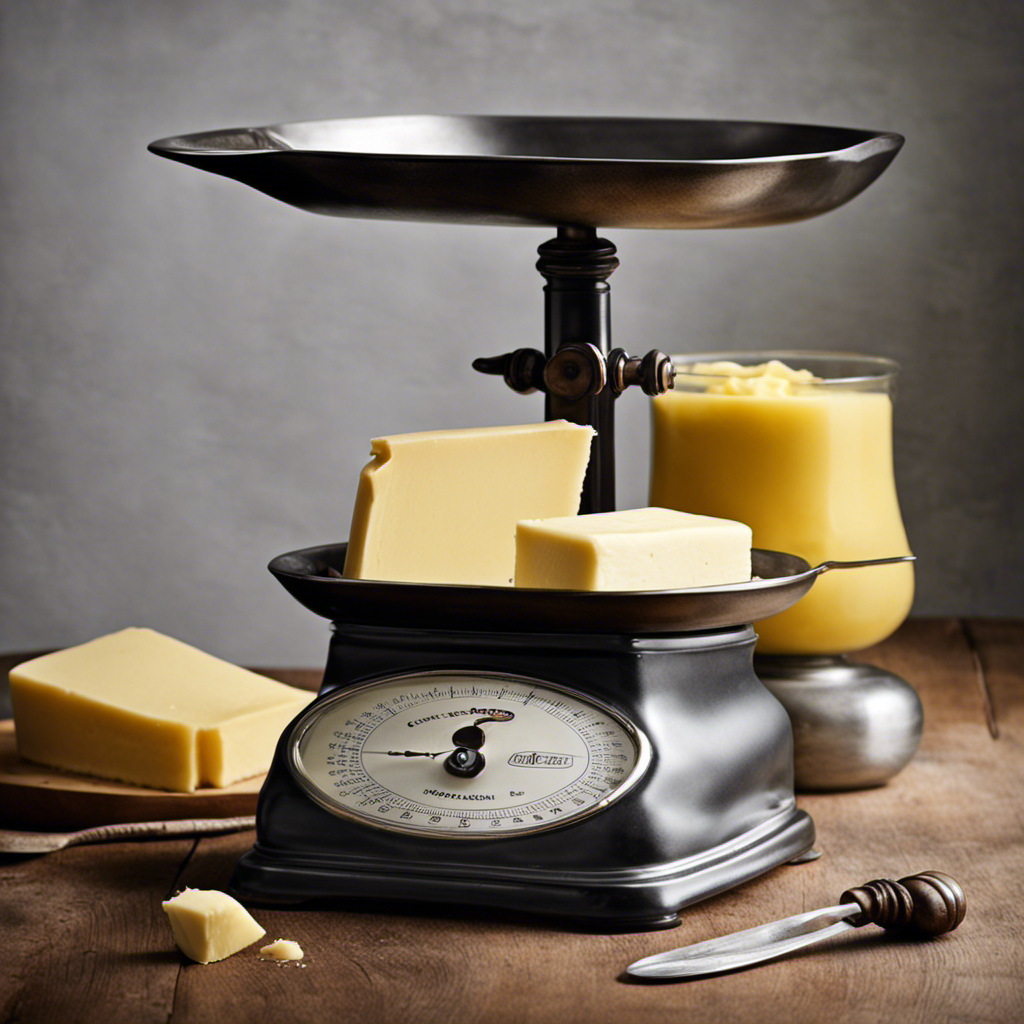Hello there! Have you ever been curious about creating butter slime? Search no more because I have everything you need right here. In this article, I’ll guide you through the process of making this sticky and enjoyable mixture, step by step.
We’ll gather the ingredients, measure the glue, add the soft clay, mix in the shaving cream, incorporate the baby oil, and even add some food coloring if you’re feeling extra creative.
So, let’s dive in and get slime-making!
Key Takeaways
- Accurate measurement is crucial when making butter slime.
- Start with a small amount of clay and gradually add more to avoid a stiff texture.
- Use high-quality fragrance-free shaving cream and gradually add more for fluffier slime.
- Incorporate the baby oil slowly and evenly, and consider using alternative oils for different textures and scents.
Gathering the Ingredients
To make butter slime, you’ll need to gather all of the ingredients.
The first and most important ingredient is glue. You can use either clear or white glue, depending on the color and texture you prefer.
Next, you’ll need some lotion to give your slime a smooth and buttery feel. Make sure to choose a lotion that doesn’t contain any oils, as this can affect the consistency of your slime.
To achieve the buttery scent, add a few drops of fragrance oil or essential oil.
Lastly, you’ll need an activator to turn your mixture into slime. You can use either borax mixed with water or a contact lens solution containing boric acid.
Now that you have all the ingredients, let’s move on to the mixing tips and alternative ingredients.
Measuring the Glue
When it comes to making slime, one of the most crucial components is the glue. Getting the right quantity of glue is key to achieving the perfect consistency and texture.
Accurate measurement is of utmost importance because even a slight deviation can affect the final outcome of your slime.
Glue Quantity for Recipe
The amount of glue you’ll need for the butter slime recipe depends on how stretchy you want the final texture to be. Here are three important things to consider when measuring the glue:
-
Precise measurements: It is crucial to measure the glue accurately to achieve the desired consistency of the slime. Using too little glue can result in a dry and crumbly slime, while using too much can make it sticky and difficult to handle.
-
Troubleshooting sticky slime: If your slime turns out sticky, it is likely because you added too much glue. To fix this, you can try adding a small amount of activator, such as borax solution or saline solution, to the slime and kneading it until it becomes less sticky.
-
Experimentation: The amount of glue you use can be adjusted based on personal preference. If you prefer a stretchier slime, you can add a bit more glue. If you prefer a firmer texture, you can use less glue. Don’t be afraid to experiment and find the perfect balance for your butter slime recipe.
Importance of Accurate Measurement
Make sure you accurately measure the glue for your slime recipe to achieve the desired consistency. Mixing accuracy and measuring precision are crucial when making butter slime.
The glue serves as the base ingredient and determines the texture and stretchiness of the slime. Too much glue can result in a sticky and gooey mess, while too little can make it dry and crumbly.
To ensure accuracy, use a measuring cup or scale to carefully measure the amount of glue needed. Remember to follow the recipe instructions precisely. This will help you achieve the perfect balance of ingredients and create a smooth and buttery slime that is fun to play with.
Adding the Soft Clay
Mix in the soft clay until it’s well incorporated into the slime mixture. When it comes to making butter slime, there are a few mixing tips to keep in mind. Here are three essential things to consider:
-
Choose the right clay: Soft clay is a key ingredient in butter slime. While many recipes call for air-dry clay, there are alternative options available. You can also use modeling clay or even playdough. Just make sure it’s soft and easy to mix into the slime.
-
Start with a small amount: Adding too much clay can make the slime too stiff and hard to stretch. Begin by adding a small portion and gradually increase it until you achieve the desired consistency.
-
Mix thoroughly: To ensure the clay is evenly distributed, mix it into the slime mixture thoroughly. Use your hands or a spoon to knead and fold until the clay is blended seamlessly.
Once the clay is well incorporated, it’s time to move on to the next step: mixing in the shaving cream.
Mixing in the Shaving Cream
Now that the soft clay is well incorporated, it’s time to start adding the shaving cream. This is where the fun really begins! Mixing in the shaving cream is a crucial step in creating the perfect butter slime texture. The shaving cream adds a fluffy and light feel to the slime, making it incredibly satisfying to play with. To ensure the best results, I recommend using a high-quality shaving cream that is fragrance-free.
When adding the shaving cream, start by squeezing a small amount onto the soft clay. Use a spatula or your hands to mix it in gently. If you want a fluffier slime, you can add more shaving cream gradually. Be careful not to overmix, as this can lead to a sticky consistency.
To help you troubleshoot any issues you may encounter during this step, I have prepared a table below:
| Issue | Possible Cause | Solution |
|---|---|---|
| Sticky slime | Insufficient shaving cream | Add more shaving cream |
| Watery slime | Too much shaving cream | Add more soft clay |
| Lumpy slime | Uneven mixing | Knead the slime thoroughly |
| Hard slime | Not enough shaving cream | Add a little more shaving cream |
| Odor | Fragranced shaving cream | Switch to fragrance-free shaving cream |
Remember to experiment with different mixing techniques and amounts of shaving cream to find the perfect balance for your butter slime. Have fun and enjoy the process!
Incorporating the Baby Oil
When it comes to incorporating baby oil into our slime recipe, there are a couple of important points to consider.
First, the mixing technique for oil is crucial in achieving the right consistency and texture. I will discuss the best way to mix the oil into the slime mixture for optimal results.
Additionally, if you don’t have baby oil on hand, there are alternative oil options that can be used as a substitute. I will explore these alternatives and discuss their pros and cons.
Discussion Point 1: Mixing Technique for Oil
To achieve the perfect consistency, you’ll need to use the right technique for incorporating the oil into the slime mixture. Here are three key tips to keep in mind:
-
Slow and Steady Wins the Race: When adding the oil, it’s important to pour it in gradually while continuously stirring the mixture. This ensures that the oil is evenly distributed throughout the slime and prevents any clumps or uneven consistency.
-
Try Alternative Oil Options: While baby oil is commonly used for butter slime, you can experiment with other oils for a different texture and scent. Coconut oil, for example, can give your slime a tropical twist, while essential oils can add a pleasant aroma.
-
Troubleshooting Techniques: If your slime ends up too oily, you can try adding more slime base or cornstarch to balance it out. On the other hand, if your slime is too dry, you can add a few drops of oil at a time until you achieve the desired consistency.
Discussion Point 2: Alternative Oil Options
If you want a different texture and scent, try experimenting with other oils for your slime mixture. There are several alternative oil substitutes that can give your slime a unique twist.
One option is coconut oil, which not only adds a pleasant tropical aroma, but also provides moisturizing benefits to your hands when playing with the slime.
Another option is baby oil, which gives the slime a smooth and glossy texture.
If you prefer a fruity scent, you can try using essential oils such as lavender or lemon. These oils not only add a delightful fragrance, but also have calming and refreshing properties.
Adding the Contact Lens Solution
After you’ve mixed the glue and shaving cream, it’s time to add the contact lens solution to create the perfect butter slime consistency. The contact lens solution acts as an activator in this recipe, helping to bind the ingredients together and give the slime its stretchy texture.
Here are three key things to keep in mind when adding the contact lens solution:
-
Mixing time: When adding the contact lens solution, it’s important to mix thoroughly. Make sure to incorporate the solution evenly throughout the mixture to ensure that all the ingredients are properly activated. This will help prevent any lumps or inconsistencies in your slime.
-
Alternative solutions: While contact lens solution is commonly used in butter slime recipes, there are alternative options available. Some people prefer using saline solution or even a mixture of baking soda and water. Experiment with different solutions to find the one that works best for you and gives you the desired slime consistency.
-
Gradual addition: It’s recommended to add the contact lens solution gradually. Start by adding a small amount and then mix it in. Continue adding more solution until you achieve the desired slime consistency. Adding too much solution at once can cause the slime to become too sticky or runny, so take your time and add it slowly.
Kneading the Mixture
When kneading the mixture, be sure to apply gentle pressure and fold the slime over itself to help distribute the contact lens solution evenly. This step is crucial in achieving the perfect consistency for your butter slime. As you knead, you’ll notice the slime becoming stretchier and less sticky. Take your time and continue to fold and press until the mixture is smooth and pliable.
Now, let’s talk about some mixing tips and alternative ingredients. If you find that your slime is too sticky, you can add a small amount of cornstarch or baby powder to help reduce the stickiness. On the other hand, if your slime is too stiff, you can add a few drops of lotion or oil to make it more stretchy and buttery.
With the mixture properly kneaded, you’re now ready to move on to the next step – adding food coloring (optional).
Adding Food Coloring (Optional
After kneading the mixture, the next step is to add some color to your butter slime. This step is optional, but it can make your slime look even more fun and interesting. There are a few different mixing techniques you can use to incorporate the food coloring into the slime.
Here are three alternative colors you can try:
-
Neon colors: Add a few drops of neon food coloring to create vibrant and eye-catching slime. Neon pink, green, and yellow are popular choices.
-
Metallic colors: If you want a more glamorous look, try adding metallic food coloring. Silver, gold, and copper can give your slime a shiny and luxurious appearance.
-
Pastel colors: For a softer and more delicate look, pastel food coloring is a great option. Pastel pink, blue, and purple can give your slime a whimsical and dreamy vibe.
Remember to mix the food coloring thoroughly to ensure an even distribution of color.
Adjusting the Consistency
To achieve a firmer or stretchier texture, you can adjust the consistency of your slime by adding more activator or lotion.
When it comes to mixing techniques, it’s important to start with a good base. Combine equal parts of glue and shaving cream in a bowl, and mix them together thoroughly.
Once you have your base, you can add your chosen color or any other desired add-ins.
If your slime is too sticky and not holding its shape, you can add more activator, such as borax solution or contact lens solution, a little at a time until it reaches the desired consistency.
On the other hand, if your slime is too stiff or not stretchy enough, you can add a small amount of lotion to soften it up and make it more pliable.
Troubleshooting tips include adjusting the amount of activator or lotion based on your desired outcome, as well as experimenting with different ratios to find the perfect consistency for your butter slime.
Happy sliming!
Storing and Maintaining Butter Slime
To keep your butter slime in the best condition, remember to store it in an airtight container to prevent it from drying out.
Here are some tips for storing and maintaining your butter slime:
-
Use an airtight container: Choose a container that has a tight seal to keep air out. This will help prevent your slime from becoming dry and crumbly.
-
Avoid direct sunlight: Keep your butter slime away from direct sunlight as it can cause the slime to melt or become discolored. Store it in a cool, dry place to maintain its texture and color.
-
Mix in options: To enhance the texture and scent of your butter slime, you can mix in various options such as foam beads, glitter, or essential oils. This will give your slime a unique and personalized touch.
Troubleshooting and Tips
When it comes to making slime, there are a few common issues that can arise, such as sticky slime. In this discussion, we will explore some solutions to help combat stickiness and ensure your slime is the perfect consistency.
Additionally, we will delve into the world of coloring and mix-ins, exploring different ways to add vibrant hues and fun textures to your slime creations.
Sticky Slime Solutions
One way to fix sticky slime is by adding more activator. When slime is too sticky, it means that there is an excess of glue or not enough activator in the mixture. By adding more activator, such as borax solution or liquid starch, you can balance out the consistency and make the slime less sticky.
Here are three additional solutions to fix sticky slime:
-
Adjust the mixing technique: Sometimes, the stickiness is caused by improper mixing. Try kneading the slime more vigorously or using a different mixing technique, such as folding or stretching, to evenly distribute the activator.
-
Use alternative ingredients: If you don’t have borax or liquid starch, you can try using other household items as activators. Baking soda mixed with contact lens solution or laundry detergent mixed with water can also work as effective alternatives.
-
Add lotion or oil: If the slime is still sticky even after adding more activator, you can try adding a small amount of lotion or oil to the mixture. This will help moisturize the slime and make it less sticky.
Coloring and Mix-Ins
Adding food coloring or glitter to your slime can create a vibrant and sparkly appearance. When it comes to mixing in ideas, the possibilities are endless.
One fun option is to use multiple colors to create a marbled effect. Begin by dividing your slime into equal parts and adding a different color to each portion. Then, gently fold the colors together until they create swirls and streaks.
Another popular technique is to create a gradient effect. Start by adding a small amount of coloring to your slime and gradually increase the amount as you mix it in. This will create a beautiful transition from light to dark or vice versa.
If you want to add some extra pizzazz, consider incorporating glitter. Simply sprinkle it into your slime and mix it in thoroughly for a dazzling finish.
Whether you choose to marble, gradient, or add glitter, experimenting with different coloring techniques is a surefire way to make your slime truly mesmerizing.
Frequently Asked Questions
Can I Use Regular Clay Instead of Soft Clay for Making Butter Slime?
Using regular clay instead of soft clay for butter slime has pros and cons. Regular clay can give a different texture and may not be as stretchy. Alternative ingredients for soft clay include cornstarch or baby powder.
How Long Does It Take for the Slime to Fully Form After Adding the Contact Lens Solution?
After adding the contact lens solution, it usually takes about 5-10 minutes for the slime to fully form. During this time, make sure to knead it well to achieve the perfect consistency.
Can I Substitute Baby Oil With Any Other Type of Oil?
I found that substituting baby oil with coconut oil gave my butter slime a tropical twist. Other options like mineral oil or even olive oil can also work, depending on the texture and scent you want to achieve.
What Can I Do if My Butter Slime Turns Out Too Sticky?
If my butter slime turns out too sticky, I can fix it by adding a little bit of lotion or baby oil and kneading it until it reaches the desired texture. These tips ensure the perfect slime consistency.
Can I Add Glitter or Other Embellishments to the Butter Slime for a Different Effect?
Sure, you can definitely add glitter or other embellishments to your butter slime for a unique and eye-catching effect. It’s all about experimenting with different textures and adding food coloring to make it even more fun!
Conclusion
In conclusion, making butter slime is like whipping up a creamy dream. With a few simple ingredients like glue, soft clay, shaving cream, baby oil, and food coloring (if you fancy), you can create a sensory masterpiece that will delight your senses.
Just follow the steps, mix everything together, and voila! You’ll have a gooey, stretchy, and oh-so-satisfying slime to play with.
So go ahead, dive into the world of butter slime and let your imagination run wild!
